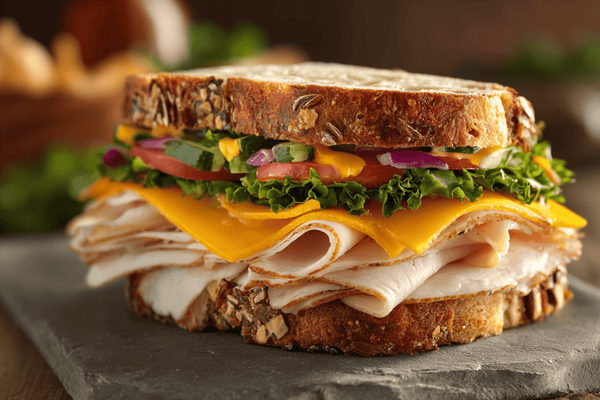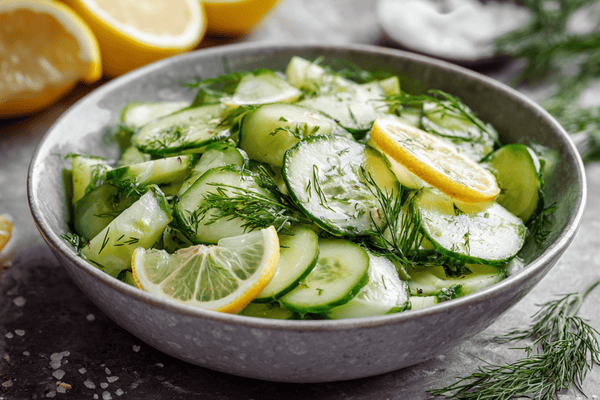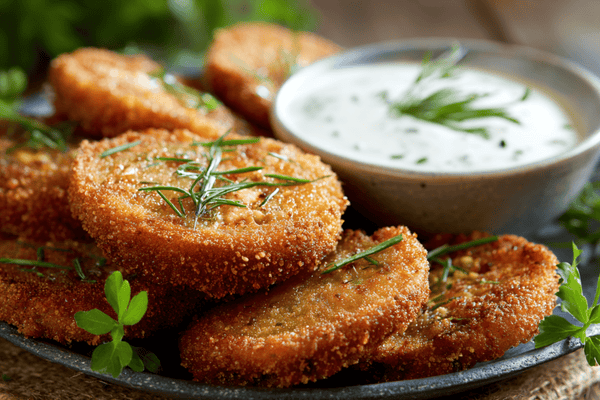
Vegetables, Vegetables, Vegetables! They're good for you, but let's be real, cutting them can be a real drag.
But don't worry, we're here to make it less of a chore and more of a party! You see, choosing the right knife for cutting vegetables is like choosing the perfect party dress or suit, it's all about finding the one that makes you feel confident and ready to take on the night (or the kitchen, in this case).
In this article, we'll be talking about the best knives for cutting vegetables and giving you tips and tricks to make it a fun and enjoyable experience. So, grab your favorite knife and let's get ready to have some fun in the kitchen!
Table of contents
- Types of knives and their uses in Vegetable cutting
- What to look for when choosing a Vegetable cutting knife
- Care and maintenance of a vegetable cutting knife
- Tips and techniques for efficiently and safely cutting vegetables
- How to sharpen a vegetable cutting knife
- Different types of vegetable cutting methods
- How to cut vegetables in a way that preserves their nutrients
- Conclusion
Types of knives and their uses in Vegetable cutting
When it comes to cutting vegetables, the type of knife you use can make a big difference in the precision and ease of your cuts. Different knives are designed for different tasks, and choosing the right one can help you achieve the perfect chop, slice, or dice.
Here, we'll take a closer look at some of the most common types of knives used for cutting vegetables and their specific uses.
 Chef's Knife: A chef's knife is a versatile and essential tool in any kitchen. It typically has a blade that is 8-10 inches long and tapers to a pointed tip.
Chef's Knife: A chef's knife is a versatile and essential tool in any kitchen. It typically has a blade that is 8-10 inches long and tapers to a pointed tip.
The curved edge allows for a rocking motion while cutting, making it ideal for slicing, dicing, and chopping vegetables. It is also good for mincing herbs and crushing garlic.
Shop Chef Knives
 Santoku Knife: A Santoku knife is a Japanese knife that is similar to a chef's knife, but it is typically shorter (5-7 inches) and has a flatter edge. It is great for slicing, dicing, and chopping vegetables and it also excels at cutting meats and fish.
Santoku Knife: A Santoku knife is a Japanese knife that is similar to a chef's knife, but it is typically shorter (5-7 inches) and has a flatter edge. It is great for slicing, dicing, and chopping vegetables and it also excels at cutting meats and fish.
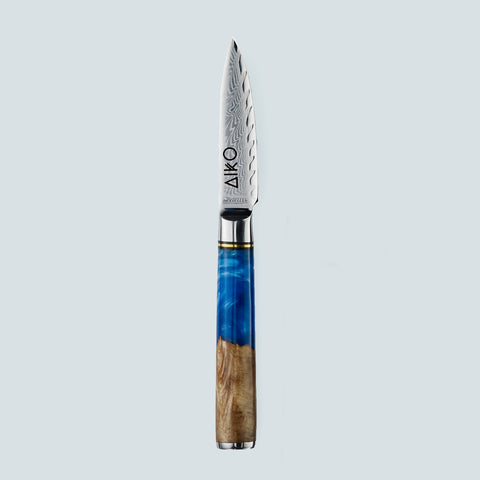 Paring Knife: A paring knife has a small, 3-4 inch blade that tapers to a pointed tip. It is perfect for precision tasks such as peeling, trimming, and coring vegetables. It's also great for cutting small fruits and vegetables like berries or cherry tomatoes.
Paring Knife: A paring knife has a small, 3-4 inch blade that tapers to a pointed tip. It is perfect for precision tasks such as peeling, trimming, and coring vegetables. It's also great for cutting small fruits and vegetables like berries or cherry tomatoes.
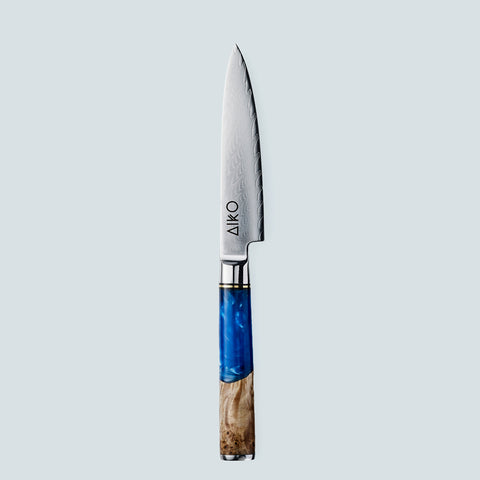 Utility Knife: A utility knife has a blade that is 4-6 inches long and is similar to a paring knife, but it is slightly larger. It is good for a variety of tasks, including peeling, slicing, and chopping. It is also good for cutting small fruits and vegetables.
Utility Knife: A utility knife has a blade that is 4-6 inches long and is similar to a paring knife, but it is slightly larger. It is good for a variety of tasks, including peeling, slicing, and chopping. It is also good for cutting small fruits and vegetables.
 Vegetable Cleaver: A vegetable cleaver is a heavy knife with a thick, rectangular blade that is 6-8 inches long. It is designed for chopping and crushing, making it perfect for breaking down tough vegetables like cabbage and carrots.
Vegetable Cleaver: A vegetable cleaver is a heavy knife with a thick, rectangular blade that is 6-8 inches long. It is designed for chopping and crushing, making it perfect for breaking down tough vegetables like cabbage and carrots.
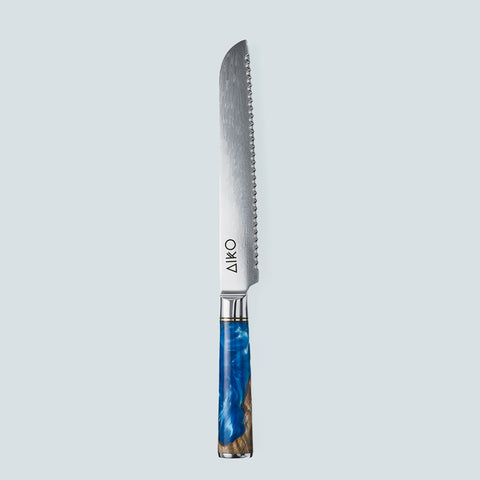 Serrated Knife: A serrated knife has a jagged edge that is perfect for slicing through soft vegetables like tomatoes and mushrooms without crushing them. It's also great for cutting bread and slicing through meats with bones.
Serrated Knife: A serrated knife has a jagged edge that is perfect for slicing through soft vegetables like tomatoes and mushrooms without crushing them. It's also great for cutting bread and slicing through meats with bones.
What to look for when choosing a Vegetable cutting knife
When choosing a knife for cutting vegetables, there are several factors to consider to ensure that you get the right tool for the job.
Blade Material: The most common materials used for knife blades are stainless steel, high carbon steel, and ceramic. Stainless steel is rust-resistant and durable, but it may not hold a sharp edge as well as high carbon steel. High carbon steel is harder and holds a sharper edge, but it is more prone to rust and discoloration. Ceramic blades are extremely hard and sharp, but they are also brittle and can chip or break if dropped.
Size and weight: The size and weight of the knife will affect your comfort and control while cutting. A heavier knife will provide more stability and power for chopping, but it may be tiring to use for extended periods. A lighter knife may be easier to control for precision cuts, but it may not have as much chopping power.
Blade shape: The shape of the blade can affect the type of cuts you can make. A curved blade, like a chef's knife, allows for a rocking motion while cutting and is great for slicing, dicing, and chopping. A straight blade, like a Santoku knife, is good for slicing and chopping in a straight line. A pointed tip, like a paring knife, is great for precision tasks such as peeling and coring.
Handle Material: The handle material is also an important factor to consider. It should provide a comfortable, secure grip and be made of a durable material. Some common materials include wood, plastic, and rubber.
Quality and Price: Quality of the knife is important as it will affect the sharpness, durability and overall performance. However, you don't have to spend a fortune to get a good knife. Look for knives that are well-balanced and made with quality materials, but don't be afraid to consider less expensive options.
Care and maintenance of a vegetable cutting knife
Proper care and maintenance of a vegetable cutting knife is important to ensure its longevity and performance.
Here are some tips to keep your knife in top condition:
- Keep it clean: Always clean your knife after use with warm soapy water and dry it thoroughly. This will prevent rust, discoloration and bacteria buildup.
- Store it properly: Always store your knife in a dry place, ideally in a knife block or sheath. This will help protect the blade and prevent it from getting damaged or dull. Use a cutting board: Always use a cutting board when cutting vegetables. This will help protect your countertops and prolong the life of your knife.
- Sharpening: Keep your knife sharp by using a honing steel or sharpening stone. A sharp knife is a safer and more efficient knife.
- Handle care: Always keep the handle of your knife clean and dry, as well as in good condition, this will help to maintain a good grip and control of the knife.
- Avoid harsh detergents and abrasives: Avoid using harsh detergents or abrasives when cleaning your knife, as these can damage the blade and the handle.
- Avoid using the knife for other purposes: Do not use your knife for other purposes than cutting vegetables, as it can dull the blade and damage the knife.
Tips and techniques for efficiently and safely cutting vegetables
Tips and techniques for efficiently and safely cutting vegetables can help you prepare your meals quickly and reduce the risk of injury.
Here are a few to keep in mind:
- Use the right knife: Always use the right knife for the job. A chef's knife is great for slicing, dicing, and chopping, while a paring knife is perfect for precision tasks like peeling and coring.
- Hold the knife correctly: Use a proper grip when holding the knife. The handle should be firmly gripped with the fingers, and the thumb and index finger should be used to guide the blade.
- Cut away from your body: Always cut away from your body to reduce the risk of injury.
- Keep your fingers tucked in: Keep your fingers tucked in and away from the blade while cutting to reduce the risk of injury.
- Cut in a rocking motion: When using a chef's knife or Santoku knife, use a rocking motion to cut vegetables. This will help you make precise cuts and chop faster.
- Make use of the whole blade: Use the whole blade of the knife when cutting to maximize efficiency and minimize the need for sharpening.
- Cut consistently: Try to cut vegetables consistently to ensure that they cook evenly.
- Cut larger items first: Cut larger items first, then move on to smaller items. Keep your cutting board stable: Place a damp towel or a non-slip mat under your cutting board to keep it stable and reduce the risk of injury.
- Use a guide hand: When cutting with a chef's knife or Santoku knife, use your non-dominant hand to hold the vegetable steady while cutting. This will help you make precise cuts and reduce the risk of injury.
- Cut in multiple directions: When chopping or dicing vegetables, try cutting in multiple directions to achieve a finer chop or dice.
- Use a peeler: A peeler can be a fast and easy way to remove the skin from vegetables like carrots, potatoes, and cucumbers.
- Cut in wedges: Cutting vegetables in wedges can be a great way to add visual interest to a dish and make them easy to cook.
- Cut in matchsticks: Cutting vegetables like carrots and cucumbers into matchsticks can be a great way to add them to salads, sandwiches, or stir-fries.
- Pre-cut vegetables: If you're short on time, you can pre-cut vegetables and store them in the fridge for later use. Just be sure to store them in airtight containers to keep them fresh.
- Practice makes perfect: The more you practice cutting vegetables, the better you'll get at it. Take your time, pay attention to the techniques, and don't be afraid to make mistakes.
How to sharpen a vegetable cutting knife
Sharpening a vegetable cutting knife is an important part of maintaining its performance and safety. Here are some tips to keep in mind:
- Use a honing steel or sharpening stone: A honing steel will realign the edge of the blade and remove any burrs, while a sharpening stone will actually sharpen the blade by removing metal from the edge.
- Hold the honing steel or sharpening stone correctly: Hold the honing steel or sharpening stone at a 20-degree angle to the blade, and use a back and forth motion to sharpen the blade.
- Keep the blade wet: Keep the blade wet while sharpening to reduce heat buildup and prevent damage to the blade.
- Start with a coarse grit: When using a sharpening stone, start with a coarse grit to remove any nicks or dullness, then move on to a finer grit to finish the sharpening.
- Test the edge: After sharpening, test the edge by cutting a piece of paper or slicing through a tomato. The blade should be sharp and able to cut cleanly.
- Keep a consistent angle: Keep a consistent angle when sharpening the blade to ensure an even edge and prevent damage to the blade.
- Professional sharpening: If you don't feel comfortable sharpening your knife, you can take it to a professional to be sharpened.
Sharpening a vegetable cutting knife is an important part of maintaining its performance and safety. Use a honing steel or sharpening stone, hold it correctly, keep the blade wet, start with a coarse grit, test the edge, keep a consistent angle and if you don't feel comfortable sharpening it, you can take it to a professional. These tips will help you to keep your knife sharp and in top condition, making it a safer and more efficient tool in your kitchen.
Different types of vegetable cutting methods
Different types of vegetable cutting methods and how to achieve the best cut can greatly affect the presentation, taste and cooking time of a dish. Here are some common methods and tips for achieving the best cut:
Slicing: Slicing is the most basic method of cutting vegetables and it is best used for vegetables that are to be cooked whole or in large pieces. For example, slicing bell peppers, eggplant or zucchini.
Dicing: Dicing is used to cut vegetables into small, uniform cubes. It is perfect for vegetables that will be used in soups, stews, or salads. For example, dicing onions, carrots or celery.
Chopping: Chopping is used to cut vegetables into irregular pieces. It's perfect for vegetables that will be used in stir-fries, salsas or relishes. For example, chopping cilantro, parsley or basil.
Julienning: Julienning is used to cut vegetables into thin, matchstick-shaped pieces. It's great for adding a decorative touch to a dish and it's perfect for vegetables that will be used in salads, sandwiches or stir-fries. For example, julienned carrots, cucumbers or bell peppers.
Mincing: Mincing is used to cut vegetables into very small pieces. It's great for adding a strong flavor to a dish. For example, mincing garlic or ginger.
Shredding: Shredding is used to cut vegetables into thin strips. It's great for adding a decorative touch to a dish and it's perfect for vegetables that will be used in salads, sandwiches or stir-fries. For example, shredding cabbage or carrots.
How to cut vegetables in a way that preserves their nutrients
Cutting vegetables in a way that preserves their nutrients is important to ensure that you are getting the most nutritional value out of your food. Here are some tips and techniques to keep in mind:
- Cut vegetables just before cooking or eating: Vegetables begin to lose nutrients as soon as they are cut, so it's best to cut them just before cooking or eating. This will help to preserve their nutritional value.
- Use a sharp knife: A sharp knife will make clean cuts and help to preserve the integrity of the cells in the vegetable, which can help to preserve their nutrients.
- Minimize exposure to heat and light: Excessive heat and light can cause the loss of nutrients, so it's important to minimize exposure to these elements. This means avoiding prolonged cooking times and storing vegetables in airtight containers or in the refrigerator.
- Cook vegetables at a low temperature: Cooking vegetables at a high temperature can cause the loss of nutrients, so it's best to cook them at a low temperature. This can be done by steaming, sautéing, or stir-frying.
- Avoid overcooking: Overcooking vegetables can cause the loss of nutrients, so it's best to avoid overcooking. This means cooking vegetables just until they are tender, but still crisp.
- Use the cooking water: Many of the nutrients from vegetables leach out into the cooking water, so it's best to use the cooking water for soups, stews, or gravies, or to save it for use in a future recipe.
- Eating raw vegetables: Eating raw vegetables is the best way to preserve the nutrients, Eating them in their natural state, is the best way to maintain the nutritional value of the vegetable, as cooking can cause a loss of some vitamins and minerals.
Conclusion
When it comes to cutting veggies, you don't want to be caught with a butter knife, because that's just a recipe for disaster (or at least, a recipe for unevenly sliced vegetables).
Choosing the right knife is like choosing the right dance partner, you want someone who moves with you and makes the experience more enjoyable.
A chef's knife is like a salsa dancer, it's versatile and can move with you in any direction. But, a Santoku knife is like a tango dancer, it's a bit more specific but can still bring the heat.
And last but not least, a paring knife is like a waltz dancer, it's elegant, precise and perfect for small and delicate tasks. Whether you're a pro chef or a home cook, it's important to remember to sharpen your knife regularly, because a dull knife is like dancing with a partner who has no rhythm.
And, don't forget to cut your veggies just before cooking or eating, because no one likes a vegetable that's been sitting around for days, it's like dancing with a partner who has two left feet. With the right knife and cutting technique, you'll be slicing, dicing and chopping like a pro in no time and having fun while doing it!
